Download PDF: Occhpinti, Religious Idealism
Abstract
For some college students on spring break, cement floors and bowls of rice have taken the place of beaches and beer, becoming an opportunity to serve others in the name of religious faith. Although secular service does exist, mission trips have emerged as a much more popular and visible option, suggesting a spiritual dimension as one possible underlying motivation. Mission trips are acts of spiritual agency as well as vehicles of faith. In that sense, service mediates between a personal and a collective sense of social purpose and moral responsibility. Based on interviews with returned and prospective mission participants, I look at how mission participants develop faith in the light of engaging with others, with self, and with God. In this paper, I am interested in short-term missions as a ritual and the consequences that this experience has for student participants.
Introduction1
As an anthropology professor at a small state university, I routinely ask students in my introductory classes about their experiences with other cultures. I have found that far more students experience other cultures as missionaries than through either anthropological research or even traditional study abroad. My experiences are far from unique; research estimates that perhaps 1.6 million Americans participate in short term mission trips each year.2 Many of these participants are high school and college-aged students. During winter and spring breaks, cement floors and bowls of rice have taken the place of beaches and beer, becoming an opportunity to serve others in the name of religious faith. Mission trips have become increasingly popular in the last few decades; Robert Wuthnow presents data that suggests that while perhaps two percent of church youth group members participated in short term mission trips before the 1980s, since 2000 this number has steadily climbed to about twelve percent.3 Certainly, there are many options for service for students and others through secular organizations, universities, and charity groups. Yet the increasing popularity of mission trips suggests that a spiritual dimension is a significant motivation. Such a trip may be spurred by an impulse towards charity, human solidarity, or the development of personal faith. Mission trips are acts of spiritual growth, but they also provide an opportunity to travel, to find adventure, and to participate in social activities.
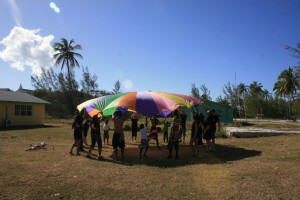
Some rights reserved. http://creativecommons.org/licenses/by-nc-nd/2.0/deed.en
The photographer, Susan Perry, 21, took part in spring break mission trips in 2008 and 2009 to the island of Exuma in the Bahamas. A photography student, Perry took pictures of her experiences
Trips aimed at young (high school and college-aged) participants encourage them to participate in highly personal acts of giving, not simply of financial and material resources, but of themselves, their time and energy, to a higher cause. As a combination of civic and religious causes, service missions mediate between a personal and a collective sense of social purpose and moral responsibility. Researchers have offered various studies of short term missions,4 but as Terence Linhart notes, “Despite the diversity of perspectives, opinions, anecdotal observations, and theories regarding short-term mission trips, there remains little that we know about the effects (both on those who go and those who host/receive) from these trips and experiences. Participants continue to report them as significant experiences… yet researchers have been unable to clearly describe the nature of that significance.”5
I began this research because of my sense that mission trips were an avenue for some of my students to experience another culture. As a professor of anthropology at a rural college, I am constantly looking for ways to engage my students with cultures beyond their own. My colleagues across a number of fields remark on the need to transform our students into “global citizens.” Perhaps mission trips, I ventured, not only allow students to visit other cultures, but spark a process of inquiry about inequality and the distribution of resources, while encouraging students to become actively involved. As with spiritual development, however, the experiences of students appear to vary.
Using interviews with returned and prospective mission participants from western Pennsylvania, I examine missionaries’ own perspective on how service affected their religious faith, and whether or not and how they feel they have “changed” as a result. The scope of my study is admittedly limited: I am not directly addressing the wide variety of program models for short-term missions, which may have quite distinct emphases and may be more or less successful in meeting their own goals; similarly, I do not consider the goals and strategies of trip organizers or home churches and parishes. Instead, I am focusing on the remembered experience of student participants, weeks or sometimes months after their return, to better understand what it is they take away from the experience, and how they integrate it into their understandings of themselves and the world around them.
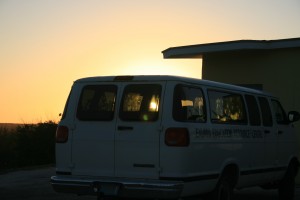
Some rights reserved. http://creativecommons.org/licenses/by-nc-nd/2.0/deed.en
The mission trips to Exuma, organized through the New Jersey-based nonprofit Starve Poverty, focused on service (e.g. helping local families with home repairs and improvements), and on outreach (e.g. organizing faith-themed activities for children such as movie nights, carnivals, and puppet shows)
In this article, I frame these experiences as a ritual, as a “time out of time”6 that echoes a rite of passage.7 Such rituals move participants through three stages: separation, liminality, and reincorporation, a movement from preparation (mundane) to sacred (liminal) time then a return to the mundane. Specifically, I draw on a model developed in literature on the anthropology of tourism. Nelson Graburn, for example, makes the argument that tourism can be analyzed as a ritual experience, one that “humans use to embellish and add meaning to their lives.”8 He notes that tourism can be understood “in terms of the contrasts between the special period of life spent in tourist travel and the ordinary parts of life spent at home.”9 Tourist experiences themselves are not all homogenous, ranging as they do from sacred pilgrimage to exploration to recreational tourism.10 Short term mission trips, as described by Nicholas Shepherd, have become for young people “one option among many for their summer holiday.”11 Robert Wuthnow points out that while motivations for going on short-term mission trips are, of course, quite varied, these trips may reflect “an acceptable way” to fulfill a desire to see the world.12
Yet participants understand the trips as being much more meaningful than a simple pleasure trip. Instead, “the traveler is seeking a very important or ‘sacred’ experience or place… a sacred center spiritually more important than anything at home.”13 The difference between “pilgrim” and “tourist” is not a clear, objective distinction, but instead is a difference in the inner motivations and understandings of the traveler, “the inward movement of the heart.”14 While many kinds of tourism may serve as rites of passage, as Graburn suggests, does the short-term mission trip serve as a modern-day pilgrimage? Anthropological understandings of ritual offer a useful tool in understanding this experience and its transformative power over participants.
Research methodology
With the goal of capturing a snapshot of the kinds of experiences in which students at this school participated, I sent out a single email call for research participants, and received a surprising number of responses. In fact, when I thanked one student at the end of the interview for coming in, she replied, “No, thank you. I am so glad that someone here actually wanted to talk about this.” Hers was a common sentiment. When I started to ask about it, students often replied that people wanted to hear about their trip, briefly, when they came home, but that even within their religious community it was more difficult to find a space to talk about what it meant to them.
In total, I interviewed fifteen students for this paper, as well as several local church leaders who had taken students on trips. These interviews were open-ended, extensive, and wide-ranging, lasting between an hour and two hours each. Two of my interviewees gave me access to journals that they had written during their trips. Three additional respondents replied to a set of questions via email. I also attended several events at a local church that sent high school and college-aged students on a mission trip, including an evening event at which the participants reported on their trip to other congregants. The goal of this exploratory research has been to draw out themes and questions that may be worth pursuing in more extensive qualitative research.
My focus was thus not on a single program or experience, but on the experiences of students at one secular, state university. The students with whom I spoke participated in diverse service missions, ranging from a three-month stint in Africa to a weekend in New York City. The majority of the trips were between a week and ten days long, and all but two of them were outside of the US. Some students went on trips sponsored by their local churches, others with large international organizations. All of them were facilitated through either Protestant (usually nondenominational Christian) or ecumenical organizations.
The students were also diverse in terms of their characterizations of their own religious beliefs. Several were quite religious, including one student who was the president of a Christian student organization on campus. Others claimed not to see themselves as particularly religious, but saw a short term mission trip as an opportunity to “help.” One student was an avowed atheist. A few of the students with whom I talked had participated in multiple trips, and all of them said that they would like to go again. Students were motivated to participate in the trips for many reasons, including that “service” has become an important résumé category in a competitive marketplace. Slightly more than half of the students I interviewed said they were motivated by a desire to help others, while the rest believed that they had been called to mission work by God.
Short term mission as ritual
In many ways, service mission trips aimed at high school and college-aged students act as a ritual, a rite of passage or rite of intensification. The participant prepares for the trip and then is plunged into a completely alien setting, removed from all of her normal routines and activities. The trip itself involves hard work, usually physical labor that is often unfamiliar and demanding. The participant then returns home, transformed. Like other rituals, travel involves a movement from the mundane world of preparation to a period of liminal time, followed by a return to the mundane.15 The literature on both service learning and the “how-to” literature of the religious community itself echo the idea of a rite of passage. An article in the Christian Education Journal mirrors this kind of analytical perspective, describing the short term mission trip as “a spiritual journey that transpired in a foreign culture where they did not know the language or customs… The result, then, was that the culture removed the familiar markers of existence and the students developed a deeper faith in God.”16 Here, the transformative effect of ritual is a specific goal of the mission trip experience. This experience of liminality does not necessarily create deeper religious faith, but it may provide an opportunity for an experience of transformation. As with most rituals, perhaps, the ways in which the participant understands and makes sense of the experience depends very much on the contexts through which the literal journey of the mission trip is integrated into his/her larger world view.
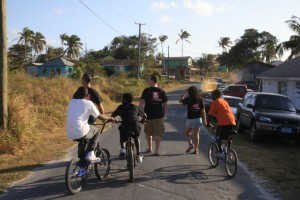
Some rights reserved. http://creativecommons.org/licenses/by-nc-nd/2.0/deed.en
The college students walked around neighborhoods to find children to invite to a carnival. In 2009, the attendees on Perry’s trip included eleven students and a few adults.
Short term missions begin with preparation – readying for the transformative journey. In order to prepare for the trip, participants are generally expected to engage in a series of meetings. These may start as much as eight months in advance, and focus on team building, travel details, and spiritual preparation. One pastor that I interviewed emphasized the importance of extensive preparation, but acknowledged that “you are never prepared to see poverty.”
Service mission trips may be more accessible for students than other kinds of travel, at least in part because an important aspect of the trip preparation is raising funds in order to participate. Nearly all of my interviewees reported that donations paid for the entire cost of their trip, although one interviewee paid his own expenses out of pocket. Funds are often raised through the simple mechanism of “fundraising letters”; requests for donations sent by participants to fellow church members, family, and acquaintances. Other money is be raised through church fundraisers like bake sales and car washes. The ability to raise money for a service mission trip makes this kind of travel far more affordable and readily accessible than other study abroad programs. People are willing to contribute to a fund to allow college students to volunteer, but it is hard to imagine similar fundraising for more traditional study abroad (and of course, few acquaintances are likely to give generously to a “spring break in Cancun” appeal).
Trip preparations generally do not include language training; most of my interviewees had no functional knowledge of the local language in the area in which they were traveling, even those who went to Spanish-speaking countries. Short term mission trips generally rely on local translators, who are often members of evangelical churches in the “receiving” community. I asked my respondents what they learned about the host culture before their trip. All but one replied that there was very little discussion of the local culture, beyond admonitions not to wear revealing clothing.17 David Livermore notes that trips are often impaired by ethnocentrism, tending to simplify or gloss over cultural differences.18
Indeed, upon arrival, students noted that they were plunged into unfamiliar and even unintelligible new surroundings. An older student who has participated in several mission trips described her first trip:
Arriving in Nigeria was surreal. I think I felt a little shell-shocked. We arrived at about 7pm; it was already dark and we were totally jetlagged. It was hot. We had to walk across the tarmac to reach the terminal, which was a big, open, cinderblock room with a prayer rug in one corner. We were the only white people in the midst of a sea of black faces. There were military men with machine guns inside the terminal… It seemed dusty, crowded, and dirty. One thing that stands out in my mind is seeing a Pepsi billboard on our way to the guesthouse! It was an utterly foreign place, but there’s this familiar product on a billboard – I felt comforted!
Similar scenes of arrival set the stage for the trip. In most short term missions, participants depart from their normal routines – starting with perhaps the most basic. Food and personal hygiene occupied the thoughts of many of the students to whom I talked. “We were so tired of rice and beans by the time we got back!” exclaimed a student who had spent a whole week in northern Mexico. Others noted cold showers – “if we were lucky enough to shower at all.” But this experience of deprivation should be placed into context with the student’s own cultural expectations: “I was worried about bringing an old towel. But the people there had no towels at all, many of them.”
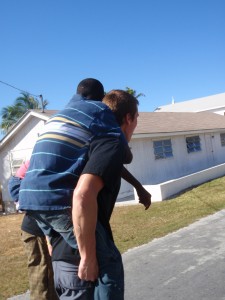
Some rights reserved. http://creativecommons.org/licenses/by-nc-nd/2.0/deed.en
A student gives a neighborhood child a piggyback ride.
Mission trip participants are thrust into a liminal role. As neither locals nor tourists they engage in hard work,19 often in construction. Most of the students that I talked to were not accustomed to physical labor, which was combined with long days. One student noted, “And you’re paying to do this. But we’d get up at five a.m. and not stop until two a.m. Somewhere you get the energy – that’s where God steps in. We were there, getting three or four hours of sleep, walking and walking, emotionally stressed. And we gave freely – people weren’t grumbling at all. In the lifestyle I’m used to, nothing is free.” Students often draw a contrast to “life at home”, and usually in a way that favored idealized notions of the “Other” culture.
The combined practice of hard work, developing new skills, and learning one’s own capabilities is an important part of the mission experience. Participants gain a sense of self confidence and personal growth; one student wryly commented, “I learned a lot about myself – that I can use a hole with frogs in it for a toilet, I can bathe in the river where they kill their pigs. I ate oysters. Hey, I did that – I can add it to my resume.” These outcomes have also been noted in secular service trips. Robert Rhoads and Julie Neururer, for example, find that student participants in a secular service learning project were very likely to comment on having developed new abilities or a greater sense of self confidence.20 Student participants in both types of trips are often on their own for the first time, without their parents, without the familiar supports of school. That both religious and secular trips foster such attitudes suggests that certain aspects of the growth and development experienced by students are an outcome of service itself, and are not related to the religious nature of the mission trips. The experience of enhanced self confidence comes from participating in the experience and pushing the boundaries of what one can do, not from any explicitly religious growth.

Some rights reserved. http://creativecommons.org/licenses/by-nc-nd/2.0/deed.en
A sign advertising the students’ “movie night” outreach with local children.
But on religious trips, the sense of growth is not limited to this kind of personal transformation. Most of the students with whom I talked describe a sense of deepened spiritual growth. Students who described themselves as very religious were unabashed about this sense of religious connection, and expressed it in the familiar language of evangelical Christianity. They saw miracles in their ability to raise money as well as in their daily interactions with the local culture. But even students who were more reserved about their religious beliefs often described the experience as transformative. An honors student, for example, said to me, “My relationship with God did change because of the trip. I’ve seen God move and do things – miracles, really. It’s scary even to say – it’s like saying, ‘wave a magic wand.’ But my faith in what he can do increased. Without religion, every day, it wouldn’t matter, but I have greater faith.” Another commented, “You learn to see things you haven’t seen before, about God and who he is. You grow spiritually. I would say that it is impossible to go as non-Christian and come back as non-Christian. You can’t deny anymore that there is a God.” Even the student who described herself as an atheist said, “It was inspiring – you realized why you were there, whatever your reasons were. I almost converted back, then I remembered, no thanks, that’s not for me.”
A large part of the sense of spiritual engagement, I would argue, comes from the radically liminal nature of the trip itself. There is a powerful sense of dislocation – students find themselves outside of their own culture, unable to communicate, separated from the day to day routine and from consumer society. Such conditions allow participants to capture a sense of mysticism and magic that may be inaccessible in normal life, tied up with getting the laundry done, watching TV, the mundane day to day. This sense of dislocation is an essential element of transformative rituals, and in this case participants are encouraged to interpret this experience through a particular interpretive framework, one heavily focused on their understandings of their relationship with God. Students spend time while on the trip in often lengthy “debriefing” sessions, during which they are encouraged to narrate the events of the day and interpret them in light of a quest for spiritual and religious meaning. Indeed much scholarship produced within the Protestant short-term mission movement suggests that reflection is a crucial element of the experience.21 The student participants that I talked to emphasized reflections on their own spirituality, with little consideration of culture, social structure, or the daily lives of the host community, despite the recognition of the importance of cultural understanding as a component of short term missions.22
For the short term mission, the setting is usually a community that is separated from the participant by a gulf of class, language, and culture.23 As an anthropologist, my interest in the mission trips is as a cross-cultural experience – one that surely attracts more students than any anthropological field school. But what seemed to show through in my interviews is that only a few students – usually those who engaged in slightly longer-term24 mission work – really gained any insights into the culture in which they were working. Instead, for most of the student missionaries, the culture that they were working in served more as a backdrop or a setting for the experience itself. As a rite of passage, perhaps, the strange and foreign setting was an essential part of removing the subject from their day-to-day life. But any genuine experience of another culture was precluded by the lack of a common language, by the very short duration of the trip, and by the limited knowledge that participants had of the culture they were working in.
In an article on an urban mission project in London, Nicholas Shepherd argues that the experience of the short term mission is constructed in much the same way as a tourist experience, with a staged Other who becomes the object of the (in this case missionary) gaze.25 “Such a staging is both a deliberate and unconscious act whereby members of a host culture provide experiences for visiting tourists that present the ‘spectacle’ and ‘spirit’ of the culture being visited but also limit the actual contact for the tourist with cultural practices and events engaged in by local communities that form the basis of these events.”26 Events and interactions are carefully staged, mediated by translators, local pastors, and church officials, and trip organizers, because of the structural constraints imposed by the phenomenon itself.
Students that I interviewed evidenced little understanding of cultural difference. One young woman who went to China said, “I don’t speak any Chinese. But it wasn’t a big deal. We were each partnered with a Chinese student. Then we could build relationships. They are learning English, so they speak for you. This actually helps, it shows how you depend on them, and value the relationship with them. You really can’t do anything or go anywhere without them.” This relationship, she explained, was what allowed the missionaries to introduce the idea of Christianity to their Chinese counterparts, who were engaged in the program as a linguistic exchange.
This exoticization of the host culture may be a particular pitfall of short term mission experiences. Richard Slimbach suggests that these trips may be colored by the same ethnocentrism that characterized much missionary work in the nineteenth century.27 The host culture becomes an imagined antithesis to the home culture, as “the missioners’ immediate surroundings – and Western life generally – is perceived as dull, shallow, and uninteresting. Robert Wuthnow also notes that seeing one’s home culture as superficial and materialistic is a common sentiment shared by many returned mission participants.28 Authentic experience is thought to lie elsewhere, in purer, simpler, and more exotic cultures.”29 The host culture becomes the antithesis of the home culture.30

Some rights reserved. http://creativecommons.org/licenses/by-nc-nd/2.0/deed.en
Students put finishing touches on their main project for the trip, painting and landscaping a group of apartments
In a study of a short term mission trip to Ecuador, Terence Linhart found that the students’ limited contact and language ability often caused them to make wild misjudgments about the real economic conditions of the Ecuadorans; Linhart describes one scenario in which a student, given fruit by a young child, was convinced, erroneously, that his family lived in a nearby hammock (when in fact they owned a shop with an apartment above it).31 Similarly, reduced to gestures and expressions, the students believed that the Ecuadorans were all “so happy,” even as they “seemed unaware of the myriad of people who passed each day who seemed uninterested in the group,”32 as well as the realities of their hosts’ day-to-day lives. These misapprehensions were encouraged by the structure of the trip itself. “Through observations of the people of Santana, they found an appearance of joy and contentment that confronted their own discontentment and consumeristic orientations. The appearances of joy and the realities of poverty were two realities students found paradoxical. As the students tried to understand what they were seeing, they expected to see people languishing and ill-kept, yet they found people who appeared to be content, joyful and loving. Instead, to the students these people seemed to be living an authentic life free from the spectacle of having that their own American culture valued.”33 This reality of the experience of global poverty may stand in sharp contrast to the images of the poor often seen by Americans, in the media and in advertisements soliciting charitable donations: images of malnourished children languishing in the dirt or on narrow beds.
Paul Bramadat, in his study of a Canadian mission group who travelled to Lithuania, noted that one of the group’s major activities was “friendship witnessing,” “the practice of sharing the gospel in the context of sincere friendships,”34 a practice which is common to many short term missions. Witnessing is a key practice for evangelicals, producing a sense of both connection with the non-Christian but just as significantly, an affirmation of one’s own faith and salvation.35 Bramadat argues that the practice of witnessing itself requires believers to adopt a position of spiritual superiority.36
This sense of superiority, however, may be tempered by notions of the host culture as idealized Other. Bramadat notes that the “Canadian participants remarked frequently that they felt they were learning more about what it means to be a Christian from recently converted Lithuanians than they felt they were able to teach these new believers.”37 Some of the students that I interviewed clearly expressed a similar idea. Extreme poverty could be interpreted as a form of spiritual superiority, another spectrum of difference between “home” and “away.” One student articulated her sense of this difference:
I think that God shows me other types of people, and he helps me to know them. The landscape there is very beautiful. The people there are so much stronger. People have nothing and they are closer to God. They are very humble.
The process of imagining the Other in the short term mission encounter may lead to notions that are positive as well as negative. “The students saw in their hosts a new way to experience life, which simultaneously revealed their own isolation and perceived lack of passion.”38
In a study of the relationship between short term missionaries and a community in Trinidad, Kevin Birth notes that this sense of spiritual superiority may also be felt by the host community. After describing the encounters of locals with an American missionary group, Birth notes that the locals tend to see themselves as superior to the Americans both in terms of spirituality and in terms of practical skills. “From rural Trinidad, the wealth of Americans is viewed by some as compromising Americans’ legitimacy to discuss spirituality, and the general consensus is that Americans have no legitimacy greater than the Trinidadians on such issues.”39
For other students, their cultural interactions were defined by, and limited to, the apparent poverty of the communities in which they were working. A student from Pittsburgh described the city in which she worked: “Their houses are really just a shelter. There would be a family of five in one bed, and there would be trash all around, and bugs, and they just had to shower in the open in the backyard.” Another student, engaged in building houses, described the local housing as “garbage bags draped over a few boards.” This poverty is the rationale for the service trips – helping those in need. Robert Wuthnow suggests that the experience of global poverty that is a key element of many short-term missions is mediated through the lens of a theology of stewardship, which emphasizes the responsibility of those who are better-off towards those who are poorer; this perspective may help to temper the potential of feeling helpless in the face of need.40
Anthropologists have long been interested in the impact of development, generally speaking, on local peoples. Given the increasing popularity of short term missions, there is as of yet very little research on its effects as a strategy for development. The research that does exist suggests that it is not cost-effective as a tool for economic development. In a study of short term mission aid following Hurricane Mitch in Honduras, Kurt ver Beek finds that houses built by mission participants were much more expensive than locally built houses, and recipients did not perceive a difference.41 In a study of medical missions in Mexico, Laura Montgomery suggested that their impact is negligible, or even harmful, as they do not address prevention or inequities in the provision of health-care.42 Jeffrey Sheler, a journalist who accompanied a group of short term missionaries on a trip to Guatemala, raised doubts about the efficacy of their work building a house, noting that the locals who participated in the project were more skilled than their American counterparts. Sheler comments:
Clearly there were more efficient ways of delivering humanitarian services, or of promoting economic development, or of spreading the Christian message than by sending in untrained teams of laymen for a week or two… Whether designed that way or not, the trips turned out to be as much for the benefit of the missionaries as for the people they were sent to help. In the end both gained something from the encounter.43
In my interviews, students described local people as “grateful” and as “humble.” They serve, in some sense, as the medium for a religious experience – the emphasis is on service, “to think about others’ needs and help meet those needs.” Some students recognized that the work may have been more important to them than to the intended recipients: “The women there didn’t need us to hold their babies. It was about encouraging them [in their faith], it was about showing friendliness, but really it was for us.” For me, as an anthropologist who has worked with issues of local economic development, it appeared as though students did not problematize poverty, or consider the structural conditions that create poverty. Instead, local people are there to receive charity, a necessary part of the experience of service, but their poverty itself serves as a kind of backdrop for the transformative experience.44
The final stage in the ritual of the short term mission trip is homecoming, the resocialization of the individual. In his analysis of tourism as ritual, Nicholas Graburn remarks that “going home” can be an ambivalent experience, a form of reverse culture shock.45 One of my respondents discussed this issue at length:
It was a huge experience. It was so huge that when you get back it doesn’t fit in with the rest of your life. When you are on trip, you all have the same focus. You have a group of eighty people with the same focus, doing something that makes a difference forever. It’s very powerful. It’s like a snowball running down hill, getting bigger as it goes. Some people accept God. You see prayers being answered.
Then you get back, and there’s no group with the same focus, there are no morning or evening meetings. You have to make breakfast and do the laundry. You can go on it for a while – you come back on a spiritual and emotional high. Some things stay changed but then the feeling is gone. People feel bad saying it’s great then it’s gone – but a lot of it is circumstances. You can’t even tell much about it right away – but it’s so big and so great it’s a you-have-to-be-there thing. You can’t explain what happened – partly because you don’t know yourself.
When the missionaries return home, they readapt to their ordinary life with a sense of inward transformation, and even of lasting change. But returned missionaries say, “People asked me about my trip. And I showed them my pictures. But then they didn’t ask anymore. I don’t know how to explain it to them.” The resolution that would come through having a new status in the home community is limited. Although the students may feel profoundly transformed, there is not a strong social recognition of the transformation itself. In this respect, the trips may differ greatly from traditional rites of passage, in which reintegration is a crucial part of the process. Those outside of the religious community may not recognize the experience at all. And even within the religious community, although a service trip may be recognized as important, it is also seen as part of “ordinary” religious duty. Some Christian denominations have clearly articulated theological understandings of charity and service, as well as of mission, and have begun to apply this perspective to short-term mission trips.46 Other denominations are more concerned with evangelization, strictly speaking, as the goal of short-term mission trips, and see the service component merely as a means to that end.47 Within many evangelical churches, the definition of service to others is extended to many kinds of interactions, not just mission trips abroad.
To make too much out of the transformative experience upends the ostensible purpose of the trip, which is after all seen as being about the Other, not the self. In a large scale study of religious volunteers within the United States, sociologist Robert Wuthnow finds that motivations for volunteering are complex, and can be both altruistic and self-interested.48 In explaining their motivations, people are sometimes either embarrassed by or consciously downplay their religious motives.49 Wuthnow suggests that the religious context of volunteer work may play a role in changing a person’s self-concept: “They begin to see themselves as more than volunteers who just happen to have done something helpful… coming to see themselves as good people.”50 Yet because of the complex nature of ideas of altruism, focusing too much on the transformative value of the trip for the self may undermine the idea of altruism that underlies service work.
An article in a special volume of the journal Missiology describes short term missions as transformative ritual:
rituals of intensification, where one temporarily leaves the ordinary, compulsory, workaday life “at home” and experiences an extraordinary, voluntary, sacred experience “away from home” in a liminal space where sacred goals are pursued, physical and spiritual tests are faced, normal structures are dissolved, communitas is experienced, and personal transformation occurs. This transformation ideally produces new selves to be reintegrated back into everyday life “at home,” new selves which in turn help to spiritually rejuvenate the churches they come from, and inspire new mission vision at home. But unlike other forms of pilgrimage, these STM [short term mission] trips explicitly intend to serve and help others in distant places. That is, they aim not only for self-transformation, but for change in the places to which they go.51
In many ways, short term mission trips can be understood as a ritual. What do students learn from this ritual, about themselves, and about the cultures that they visit?
One apparent outcome of this experience is that students do seem to develop a greater religious sense, as well as an increased self-understanding and confidence. All of the mission participants that I interviewed clearly described that they had indeed developed a stronger sense of religious faith, but one which was also often more complex and nuanced. One student, who spent three months in Nigeria, told me,
The experience almost made me have more questions – but they are good questions. Before, my faith was more shallow. I was there on my own, not with group, by myself. It was so hard to depend on God. At same time, I felt my faith being attacked more. I had to question why I was born where I was, these people where they were. But the experience did strengthen my faith – I don’t know how to say it, but it gave me a better outlook on the whole world.
Although expressions of faith varied widely in my interviews, all of the participants agreed that they did feel that their religious faith was deeper as a result. It seems that the nature of the trip as a ritual may produce this result.52 Other researchers have questioned the long-term impact of such experience, however, at least insofar as it can be assessed quantitatively.53 My data do not allow me to respond to this issue, but this is an area in which more long term qualitative research would surely be fruitful. While participants may feel as though they have changed deeply as a result, at least some researchers suggest that this may be both short-lived and isolated from their day-to-day lives.
Conclusion
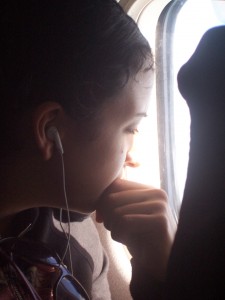
Some rights reserved. http://creativecommons.org/licenses/by-nc-nd/2.0/deed.en
When asked why she chose to spend her Spring Break on a mission trip, Perry responded that “[s]erving God is when I feel most alive.”
This research suggests a number of directions for further study. Insofar as the mission trips are clearly both intended and understood as a religious experience, they seem fundamentally different from traditional long-term Christian missions.58 In long-term missions, the efforts of the missionary are focused on others’ religious experiences, with the missionary as a conduit or medium of religious understanding. Short-term missions intend to focus instead on service, on concrete projects and activities. Yet the descriptions I received from these short term student missionaries focus on the self, on one’s own experience of God, as discovered through service, rather than on the other’s experience of God. At the same time, students’ reports lack reflexivity, explicitly deny the importance of this inward transformation, and often convey the suspicion that reflection may even diminish the authenticity of the service work itself. How this paradox is experienced and understood is an important part of understanding short term mission work and the transformation that it produces in student participants.
Short-term missions clearly act as a form of ritual, bringing the participant through a stage of liminality to a new sense of self. While they echo religious pilgrimage in this transformative journey, they contrast in some ways to more traditional pilgrimages, which often entail a visit to a site that is itself sacred. In the short-term mission, the destination is “the poor,” and the experience of the sacred lies not in the site but in the act of service.
Feature Image by Susan Perry, The Richard Stockton College of New Jersey
Some rights reserved. http://creativecommons.org/licenses/by-nc-nd/2.0/deed.en
Notes
- An earlier version of this paper was presented at the American Anthropological Association’s annual meeting in San Jose, California in 2006. My thanks to the panel’s organizers, Robert Priest and Brian Howell, as well as to other participants, for their thoughtful and generous comments that contributed to this revision. I would also like to thank Joseph Occhipinti for his comments and support. A great number of Clarion students participated in this research, with an amazing enthusiasm and willingness to share their experiences and insights: I am grateful to them. A summer research stipend from Clarion University supported this project.
- Robert Priest et al., “Researching the Short-Term Mission Movement,” Missiology 34 (2006): 432. As discussed in the article by Robert Priest, Terry Dischinger, Steve Rasmussen, and C.M. Brown cited here, this number is a rough estimate, based on data collected by Robert Wuthnow, which only includes participants over the age of 18. The actual number is thus likely to be higher. An estimate offered by David Livermore in his article “American or American’t,” (Evangelical Missions Quarterly 40 (2006: 2)) suggests that more than 5.5 million 13-17 year-olds have gone on 11.5 million mission trips.
- Robert Wuthnow, Boundless Faith: The Global Outreach of American Churches (Berkeley: University of California Press, 2009), 167.
- This work comes from a range of perspectives. The majority of published work on short-term missions has come from a theological perspective (Kurt Ver Beek offers a detailed bibliography at http://www.calvin.edu/academic/sociology/faculty/ver-beek/kurt/researchp…). There is a considerable literature aimed at practitioners, such as Michael Anthony’s The Short Term Missions Boom, (Grand Rapids, MI: Baker Books, 1994). There is also an emerging interest in the social sciences; see for example, Robert Priest and Tito Paredes, eds., Special Issue on Short-Term Missions in Latin America, Journal of Latin American Theology: Christian Reflections from the Latino South 2 (2007); Kurt Ver Beek, “Lessons from the Sapling: Review of Quantitative Research on Short-Term Missions.” In Effective Engagement in Short-Term Missions: Doing it Right! (edited by Robert Priest, William Carey Library, 2008), 469-496.
- Terence D. Linhart, “Planting Seeds: The Curricular Hope of Short Term Mission Experiences in Youth Ministry,” Christian Education Journal (CEJ): Series 3, 2 (2005): 257.
- Roy Rappaport, Ritual and Religion in the Making of Humanity (New York: Cambridge University Press, 1999), 216-225.
- Arthur Van Gennep, The Rites of Passage, English trans 1960 by M. B. Vizedom and G.L.Caffee (London, Routledge & Kegan, 1960 [1908]), Victor Turner, “Betwixt and Between: The Liminal Period in Rites de Passage,” The Forest of Symbols: Aspects of Ndembu Ritual (Ithaca: Cornell University Press, 1967), 93-111.
- Nelson H. H. Graburn, “Secular Ritual: A General Theory of Tourism,” In Hosts and Guests Revisited: Tourism Issues of the 21st Century, eds. Valene L. Smith and Maryann Brent (Elmsford, NY: Cognizant Communication Corp., 2001), 42.
- Ibid., 42, italics in original.
- E. Cohen, “A Phenomenology of Tourist Experiences,” Sociology 13 (1979): 179-201.
- Nicholas Shepherd, “Soul in the City – Mission as Package Holiday: The Potential Implications of a ‘Tourist’ Paradigm in Youth Mission,” Anvil 22 (2005): 259.
- Wuthnow, Boundless Faith, 173.
- Graburn, 48.
- Victor Turner and Edith L.B. Turner, Image and Pilgrimage in Christian Culture (New York, Columbia University Press, 1978), 8.
- Graburn, 42 – 50.
- Linhart, “Planting Seeds,” 261-262.
- Due to the limits of my research, I am unable to address whether this might have been because trip leaders were unfamiliar with the culture itself, because of limited notions of culture and cultural difference, or whether it was an intentional strategy to intensify liminality.
- David Livermore, “Cultural Intelligence and Short-Term Missions: The Phenomenon of the 15-year-old Missionary,” http://assets.cornerstone.edu/pages/2952/File/CQ%20and%20STM.pdf.
- Work, itself, is one element that distinguishes the short-term mission participant from the ordinary tourist, whose primary activity is some form of leisure.
- Robert A. Rhoads and Julie Neururer, “Alternative Spring Break: Learning through Community Service,” NASPA Journal 35 (1998): 106.
- For example, Linhart, “Planting Seeds”; Miriam Adeney, “When the Elephant Dances the Mouse May Die,” In Short-Term Missions Today, ed. Bill Berry, (Pasadena, CA: Into All the World Magazine, 2003), 86-89; Kathryn Tuttle, “The Effects of Short-Term Mission Experiences on College Students’ Spiritual Growth and Maturity” (Ed.D. Diss., Biola University, 1998).
- For example, Livermore, “Cultural Intelligence and Short-Term Missions”; Richard Slimbach, “First Do No Harm: Short-Term Missions at the Dawn of a New Millennium,” Evangelical Missions Quarterly 36 (2000): 428-441; Adeney.
- Even trips within the US were usually to either an inner city or to a very poor rural area, where participants may have shared a language with locals but were still divided from them, usually by ethnicity or race.
- Most missionary organizations consider “short-term” missions to be any that last less than twelve months. Among my student interviewees, the longest mission experience was three months, which is what I refer to here.
- Shepherd, 261.
- Ibid., 261.
- Slimbach, 428-441.
- Wuthnow, Boundless Faith, 184.
- Slimbach, 429.
- Terence D. Linhart, “They Were So Alive!: The Spectacle Self and Youth Group Short-Term Mission Trips,” Missiology 34 (2006): 451-462.
- Ibid., 457.
- Ibid., 455.
- Ibid., 459.
- Paul A. Bramadat, The Church on the World’s Turf: An Evangelical Christian Group at a Secular University (Oxford: Oxford University Press, 2000), 124.
- Ibid., 137.
- Ibid., 136.
- Ibid., 124.
- Linhart, “They Were So Alive,” 452.
- Kevin Birth, “What Is Your Mission Here?: A Trinidadian Perspective on Visits from the ‘Church of Disneyworld,'” Missiology 34 (2006): 503.
- Wuthnow, Boundless Faith, 184.
- Kurt Alan Ver Beek, “The Impact of Short-Term Mission: A Case Study of House Construction in Honduras after Hurricane Mitch,” Missiology 34 (2006): 477-495.
- Laura Montgomery, “Short-term Medical Missions: Enhancing or Eroding Health?” Missiology 21 (1993): 333-341.
- Jeffery L. Sheler, Believers: A Journey into Evangelical America (New York: Penguin, 2006), 192.
- Clearly, many program models do try to emphasize complex understandings of poverty, but this notion was not expressed by most of the students with whom I spoke for this project.
- Graburn, 42 – 50.
- See, for example, Anthony, ed.
- See, for example, Jeff Edmondson, “The End of the Youth Mission Trip as We Know It,” Youth Specialties, http://www.youthspecialties.com/articles/topics/missions/the_end.php.
- Robert Wuthnow, Saving America? Faith-Based Service and the Future of Civil Society (Princeton, N.J.: Princeton University Press, 2004), 129.
- Ibid., 131.
- Ibid., 132.
- Priest et al., 433-434.
- See also Stephen T. Beers, “The Effects of a Study Abroad/Mission Trip on the Faith Development of College Students,” Growth: The Journal of the Association for Christians in Student Development 1 (2001): 83-107.
- Ver Beek, “The Impact of Short-Term Mission,” 477-495.
- Graburn, 43.
- Turner and Turner.
- Wuthnow, Boundless Faith, 6-7.
- Ibid., 9.
- While many congregations frame short-term missions more in terms of long term relationship-building with specific churches or parishes abroad (see for example Tara Hefferan, Twinning Faith and Development: Catholic Parish Partnering in the US and Haiti. Bloomfield, CT: Kumarian Press, 2005), none of the participants in my sample were involved in projects of that nature.






